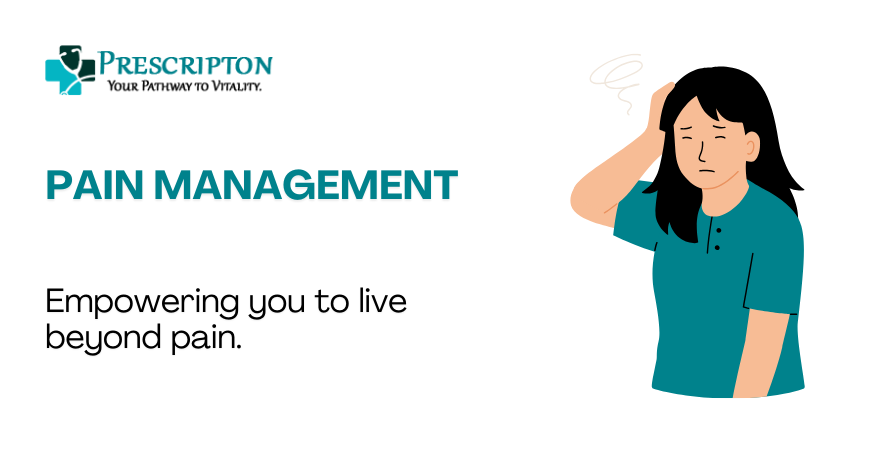
Pain Management Strategies And Medications
As people age, chronic pain becomes a more frequent companion. Pain can arise from various sources, including arthritis, joint degeneration, musculoskeletal disorders, or chronic illnesses. Effective pain management in older adults requires a thoughtful approach that considers their unique health needs, potential medication interactions, and overall well-being. In this blog, we will explore pain management techniques tailored for older adults to improve comfort and quality of life.
Understanding Pain in Older Adults
Pain in older adults is complex and can be influenced by factors such as:
- Age-Related Changes: With age, the body’s response to pain may change, and recovery can take longer.
- Co-Existing Health Conditions: Many older adults have chronic health conditions that can exacerbate pain.
- Medication Interactions: Older adults often take multiple medications, increasing the risk of adverse drug interactions.
- Psychological Factors: Depression, anxiety, and loneliness can amplify the perception of pain.
Given these factors, pain management strategies for older adults must be individualized, considering their specific health profile and personal preferences.
1. Pharmacological Pain Management
Pharmacological treatments are common, but they must be used cautiously in older adults due to increased sensitivity and potential drug interactions. Key considerations include:
- Nonsteroidal Anti-Inflammatory Drugs (NSAIDs): These are often used for pain relief, but they can cause gastrointestinal issues and increase the risk of cardiovascular events. Lower doses or topical applications may be preferable.
- Acetaminophen (Tylenol): Generally safer than NSAIDs, acetaminophen is a common first-line treatment for mild to moderate pain.
- Opioids: Due to their risk of addiction and side effects, opioids should be used with caution and only under close medical supervision.
- Adjuvant Medications: Medications like antidepressants or anticonvulsants can be effective for certain types of pain, such as neuropathic pain.
2. Non-Pharmacological Pain Management
Non-pharmacological approaches are crucial for older adults, providing alternative or complementary methods to manage pain without medication risks. Consider these techniques:
- Physical Therapy: A physical therapist can design exercises to improve strength, flexibility, and mobility while reducing pain.
- Occupational Therapy: Occupational therapists focus on improving daily activities, often suggesting adaptive devices to minimize pain.
- Massage Therapy: Massage can help relax muscles, reduce stress, and alleviate pain in specific areas.
- Acupuncture: This traditional Chinese medicine technique involves inserting thin needles into specific points on the body. It may help reduce pain and improve circulation.
- Chiropractic Care: Chiropractors focus on spinal alignment and joint function, potentially reducing pain from musculoskeletal issues.
3. Mind-Body Techniques
Mind-body techniques can play a significant role in pain management by addressing the psychological and emotional aspects of pain. These include:
- Mindfulness Meditation: Practicing mindfulness helps older adults stay present and reduce stress, which can decrease pain perception.
- Deep Breathing and Relaxation Techniques: These techniques can calm the nervous system and reduce muscle tension.
- Guided Imagery: By focusing on positive mental images, guided imagery can help divert attention from pain and promote relaxation.
- Yoga and Tai Chi: These gentle forms of exercise promote flexibility, balance, and relaxation, potentially reducing pain.
4. Lifestyle Changes
Simple lifestyle changes can contribute significantly to pain management in older adults:
- Balanced Diet: A diet rich in anti-inflammatory foods, like fruits, vegetables, and omega-3 fatty acids, can help reduce pain.
- Regular Exercise: Regular physical activity, tailored to individual abilities, can improve mobility and reduce pain.
- Adequate Sleep: Good sleep hygiene is crucial, as poor sleep can exacerbate pain.
- Social Engagement: Staying socially active and maintaining connections with family and friends can reduce feelings of isolation and improve overall well-being.
5. Multidisciplinary Approach
A multidisciplinary approach involves collaboration among healthcare providers, ensuring comprehensive pain management. This approach may include:
- Physicians: To oversee medical treatments and coordinate care.
- Physical and Occupational Therapists: To guide exercise and adaptive techniques.
- Mental Health Professionals: To address emotional and psychological aspects of pain.
- Social Workers: To assist with social and community support.
Conclusion
Pain management for older adults requires a tailored and compassionate approach. By combining pharmacological and non-pharmacological techniques, addressing mind-body connections, and promoting healthy lifestyle changes, older adults can achieve improved comfort and a better quality of life. If you or a loved one experiences chronic pain, consider consulting with healthcare professionals to create a comprehensive pain management plan that meets individual needs and preferences. Remember, effective pain management is possible, and support is available.
